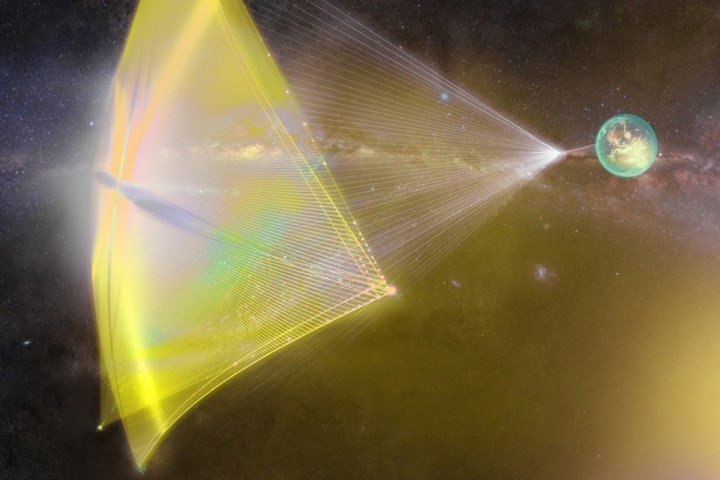
More recently, a team of researchers from Harvard University has presented a more provocative idea: FRBs may actually be signs of extraterrestrial intelligence.
In a paper published in Astrophysical Journal Letters, theoretical physicists Avi Loeb and Manasvi Lingam explore whether it’s possible to create a radio transmitter that’s powerful enough to be detected at the great distance of current FRBs, which are well beyond the Milky Way. They’re calculations showed it is possible but that there’s a catch — the sunlight would need to be collected from an area twice the size of Earth and the device would need to be equipped with a sophisticated cooling system so as not to overheat. That’s way beyond our current capabilities but it’s still theoretically possible.
When considering why exactly an advanced civilization would create such an immense radio transmitter, the researchers landed on an initiative that caught headlines just last year and which was close to their heart.
“I was inspired by my involvement in the Breakthrough Starshot project,” Loeb told Digital Trends, “which aims to use a powerful beam of light to push a lightweight sail to a fifth of the speed of light, so that the spacecraft will reach the nearest star within two decades.” The project is backed by the likes of Stephen Hawking and Mark Zuckerberg.
“The power used by the radio transmitted is too high for other purposes, such as communication,” Loeb said. “We showed that the characteristics of fast radio bursts imply a transmitter with a size comparable to the diameter of the Earth, which is being powered by the light of its host star. The beam of radiation is tightly focused on the sail, but some of the radiation leaks towards the observer.” In this case, that leaked radiation would be what astronomers are detecting as FRBs.
Still, the researchers admit their paper is speculative. They’re not saying FRBs are aliens, just that they could be.
“The nature of the sources of fast radio bursts is unknown,” Loeb said. “Most astronomers believe they are associated with the aftermath of the collapse of massive stars. But our paper suggested an artificial origin. More data is necessary to decide which interpretation is more likely.”


